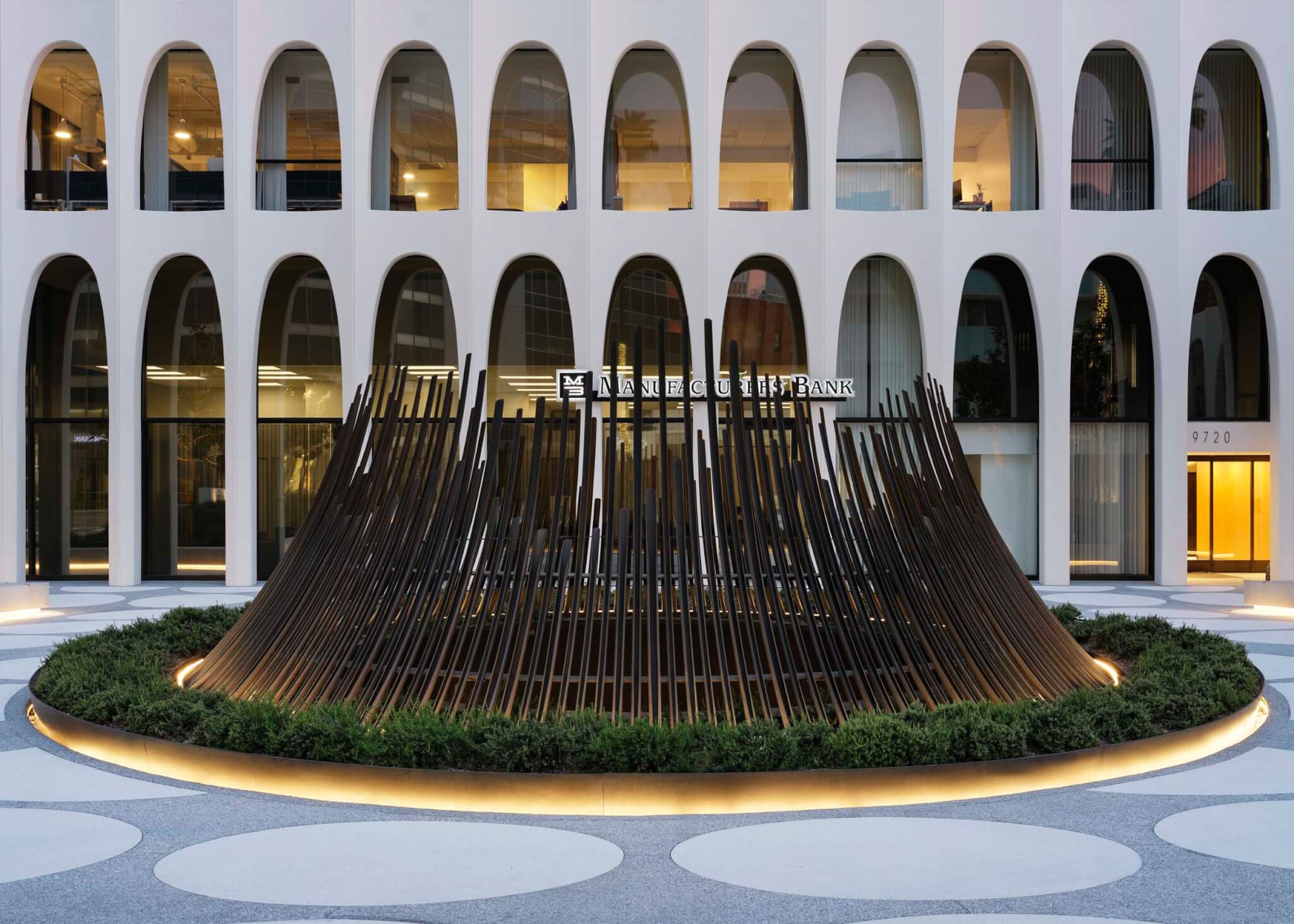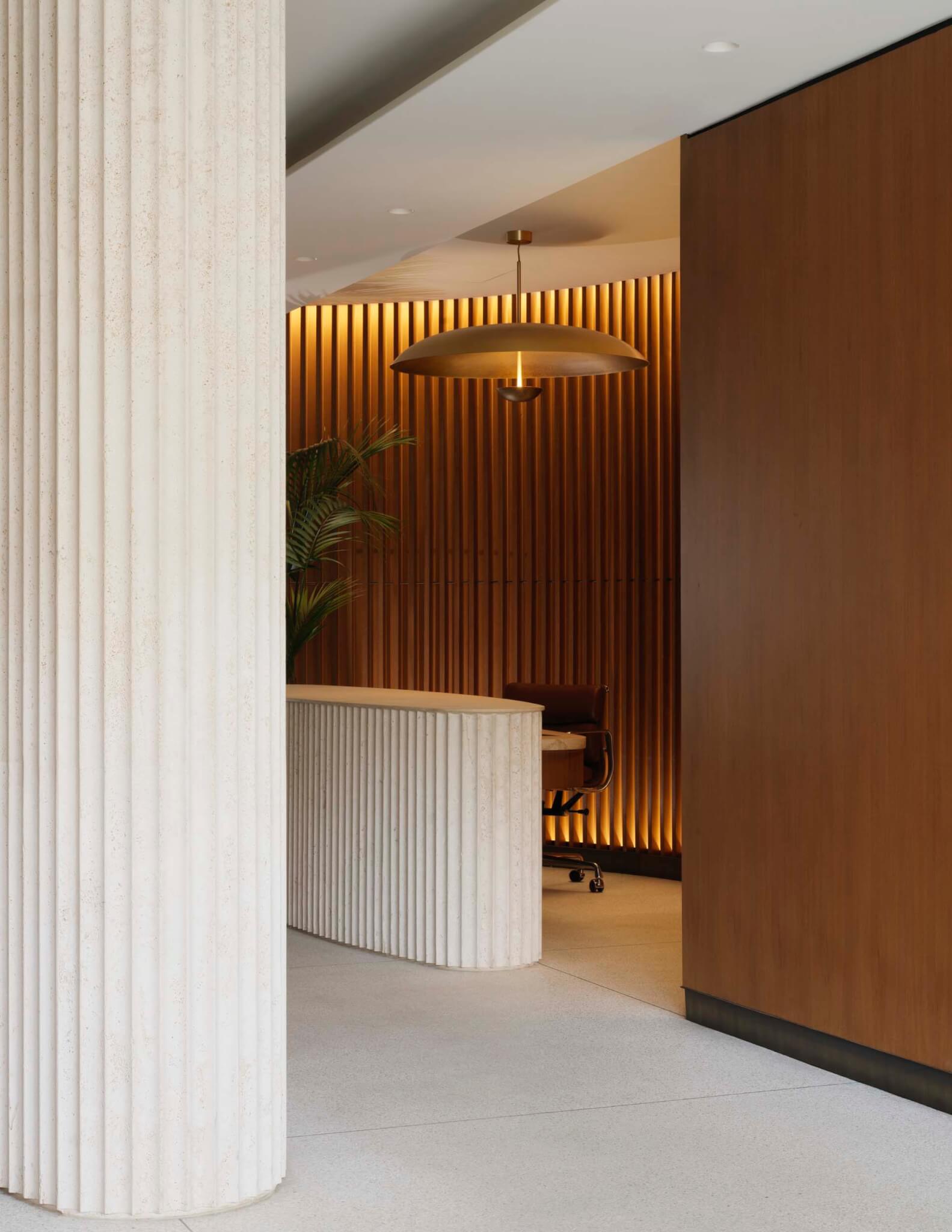Edward Durell Stone’s 9720 Wilshire Boulevard opened in 1962 around the height of his career. While dwarfed in national iconography by his design for the Kennedy Center, which opened the same year, 9720 Wilshire was one of three Durell Stone projects that shaped the Beverly Hills, California street. The 20,500-square-foot commercial building has often drawn comparisons to Giovanni Guerini, Ernesto Bruno, and Mario Romano’s Rationalist Palazzo della Civiltà Italiana, commissioned by Mussolini. The facade appears as if Durell Stone took the Palazzo della Civiltà Italiana, stretched its arches in the style of Minoru Yamasaki, and added undulations to the top of the facade, which would have otherwise been flat—decidedly New Formalist.
In 2021, Los Angeles–based Montalba Architects announced it would be renovating the building, including the surrounding plaza. The project, which opened earlier this year, retained Durell Stone’s facade while overhauling the plaza and renovating interior spaces, staying true to Durell Stone’s original design intent.

The building had not been touched since a previous renovation a few decades prior to Montalba’s engagement with the project. The firm said that the client requested a modernized office building that respected the building’s original prominence, and fostered a better environment for occupants.

The largest intervention Montalba made was in designing a replacement for a fountain, which had anchored the plaza in Durell Stone’s design and originally held a Harry Bertoia sculpture that was removed in 1967. The fountain had been decommissioned in 2010 to preserve water after it had been leaking, and Montalba opted to remove it entirely. In the gap left by the fountain, the architects designed a sunken garden and light well, which opened the minimally-used basement level to some daylight. Above-grade, Montalba designed a bronze-pronged sculpture that bends upward over the light well—similar to an inverted arc of water coming out of a fountain, though inspired by the building’s arches, the Montalba said. Below-grade, five gallery spaces connect around the sunken garden, offering a better use for the once-ignored space. Montalba worked with OJB Landscape Architecture to realize the landscape design.

Around where the fountain previously stood, the architects redesigned the plaza. Workers extracted the original terrazzo and restored its original pattern and finish. New white concrete benches and plantings fill out the plaza further, while providing a more welcoming environment. Minimal planting around the sculpture frames the work while more lush beds near the edges of the site (formerly trees in grass patches) provide more substantial plantings but leave the plaza open to more direct sunlight.

A glass-and-steel trellis was designed to provide more enclosure for occupants entering the basement level, and is tucked to the side of the site, not interfering with sight-lines of the facade. In the main lobby, Montalba designed walnut paneling, terrazzo floors, and fluted stone elements, all surrounded by bronze finishings, adhering to the request to provide a contemporary feel to the building. While a significant change from Durell Stone’s design, it does not feel overbearing, and recognizes the ability to incorporate contemporary material choices that do not fully depart from the original midcentury aesthetic.











